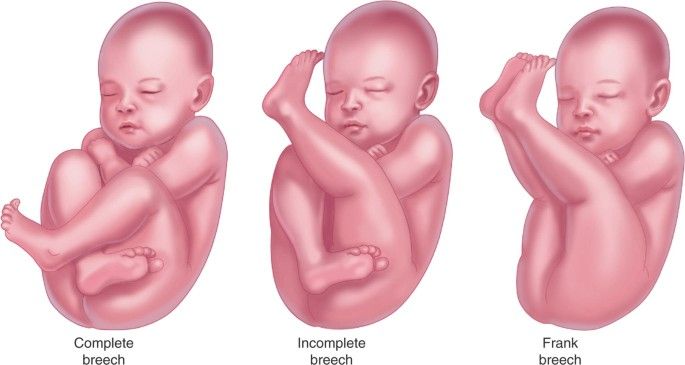
Breech presentation, where the fetus presents with its buttocks or feet first, occurs in approximately 3-4% of term pregnancies. While cesarean section has become the predominant mode of delivery for breech presentations following the landmark Term Breech Trial (Hannah et al., 2000), a planned vaginal breech delivery remains a safe and viable option for carefully selected candidates when managed by a skilled and experienced practitioner in a well-equipped facility. The procedure requires a profound understanding of fetal mechanics, precise maneuvers, and a state of constant readiness to manage potential complications.
Pre-Delivery Assessment and Candidate Selection
The foundation of a safe vaginal breech delivery is meticulous patient selection. Not all pregnancies with a breech presentation are suitable for a trial of labor. Strict adherence to established criteria is paramount to minimizing maternal and neonatal morbidity.
Essential Selection Criteria:
- Gestational Age: The pregnancy should be at or near term (≥37 weeks).
- Type of Breech: Frank breech (hips flexed, knees extended) or complete breech (hips and knees flexed) presentations are generally considered favorable. Footling breech (one or both feet presenting) is associated with a higher risk of umbilical cord prolapse and is often a contraindication for vaginal delivery.
- Estimated Fetal Weight (EFW): The EFW should be within a normal range, typically between 2,500 and 4,000 grams. Both macrosomic and very small fetuses are at increased risk of complications.
- Fetal Head Position: The fetal head must be well-flexed, not extended or hyperextended (as seen in a “stargazing” fetus). Hyperextension is an absolute contraindication due to the high risk of cervical spine injury.
- Maternal Pelvis: The maternal pelvis must be assessed as adequate, either clinically or through pelvimetry, with no evidence of contraction or unfavorable architecture.
- Absence of Obstetric Contraindications: There should be no other reasons for a cesarean delivery, such as placenta previa, previous classical uterine incision, or fetal distress.
Informed consent is a critical component of this stage. The attending physician must engage in a thorough discussion with the patient about the risks and benefits of both planned vaginal breech delivery and elective cesarean section, including potential risks of head entrapment, birth trauma, and the need for an emergency cesarean.
Intrapartum Management: The First Stage of Labor
Once a patient is deemed a suitable candidate and labor begins, vigilant monitoring is essential.
- Setting: The delivery must take place in a hospital with the immediate availability of an operating room for an emergency cesarean section.
- Personnel: A skilled obstetrician experienced in vaginal breech delivery must be present for the entire second stage. Anesthesia personnel and a neonatal team capable of advanced resuscitation should also be immediately available.
- Fetal Monitoring: Continuous electronic fetal monitoring (EFM) is mandatory to detect early signs of fetal compromise, such as cord compression, which is more common in breech labor.
- Labor Progress: Labor should progress normally and spontaneously. Any evidence of dystocia (abnormal or difficult labor), such as arrest of cervical dilatation or descent, is an indication to reconsider the delivery plan and proceed with a cesarean section. Augmentation of labor with oxytocin can be used cautiously but is often avoided.
The Second Stage: A Step-by-Step Guide to Delivery
The second stage of labor demands a calm, controlled, and patient approach. The cardinal rule of breech delivery is “hands off the breech” until spontaneous delivery has occurred up to the level of the umbilicus. Premature traction can cause the fetal arms to extend or the head to deflex, leading to serious complications.
Phase 1: Birth of the Buttocks and Legs (to the Umbilicus)
The mother should be encouraged to push effectively with each contraction. The fetal buttocks will begin to distend the perineum. The infant should be allowed to deliver spontaneously until the umbilicus is visible. This process should not be rushed or assisted with traction. Once the umbilicus is born, the delivery of the rest of the body should ideally be completed within 3-5 minutes to avoid hypoxia from umbilical cord compression against the pelvic brim.
Phase 2: Delivery of the Arms and Shoulders
If the arms do not deliver spontaneously after the birth of the chest, assistance is required. The Løvset Manoeuvre is the standard and most effective method:
- Grip: The operator grasps the infant’s bony pelvis (iliac crests) with both hands, using a towel for a secure grip. Avoid compressing the abdomen.
- Rotation 1: The fetal trunk is rotated 180 degrees while applying gentle downward traction. This maneuver brings the posterior shoulder into an anterior position below the symphysis pubis, allowing the posterior arm to sweep across the chest and deliver.
- Rotation 2: The trunk is then rotated 180 degrees back in the opposite direction. This brings the second shoulder (which was originally anterior) into an anterior position, allowing the other arm to deliver in the same manner.
If an arm is extended above the head (a nuchal arm), the operator may need to insert a hand along the infant’s back to locate the elbow, flex it, and sweep the arm down across the face and chest.
Phase 3: Delivery of the Aftercoming Head
This is the most critical part of the delivery. The head must be delivered quickly but carefully, maintaining flexion at all times. The Mauriceau-Smellie-Veit (MSV) Manoeuvre is the primary technique:
- Positioning: The infant’s body is supported on the operator’s forearm, with legs straddling the arm.
- Flexion: The operator’s middle and index fingers are placed over the fetal maxilla (cheekbones)—never in the mouth—to promote head flexion.
- Traction: The other hand is placed over the infant’s shoulders, with the middle finger pressing on the occiput to further encourage flexion. Gentle downward and outward traction is applied in coordination with maternal pushing.
- Assistance: An assistant should apply suprapubic pressure (not fundal pressure) to help keep the fetal head flexed and guide it through the pelvis.
- Delivery: As the head crowns, the traction is gradually shifted upward, allowing the face, brow, and occiput to be born slowly over the perineum, minimizing the risk of tearing.
An alternative for delivering the head is the use of specialized Piper forceps, which are applied from below to the aftercoming head while an assistant supports the fetal body.
Management of Complications
Even in carefully selected cases, complications can arise.
- Head Entrapment: This is the most feared complication, where the aftercoming head is trapped by an incompletely dilated cervix or the pelvic outlet. Management may include administering tocolytics (e.g., nitroglycerin) to relax the uterus or performing Dührssen’s incisions on the cervix at the 2, 6, and 10 o’clock positions to release the head. This is a high-risk procedure reserved for emergencies.
- Cord Prolapse: More common with incomplete or footling breech, this requires immediate delivery, typically by emergency cesarean section.
Conclusion
Vaginal breech delivery is a highly specialized obstetric skill that, when applied within strict clinical guidelines, offers a safe alternative to routine cesarean section. Its success is contingent upon rigorous patient selection, the presence of an experienced practitioner, a well-prepared multidisciplinary team, and an institutional readiness to intervene surgically if necessary. The principles of patience, minimal intervention, and the proficient execution of established maneuvers like the Løvset and Mauriceau-Smellie-Veit are the cornerstones of achieving a safe and successful outcome for both mother and child.
References
- Hannah, M. E., Hannah, W. J., Hewson, S. A., Hodnett, E. D., Saigal, S., & Willan, A. R. (2000). Planned caesarean section versus planned vaginal birth for breech presentation at term: a randomised multicentre trial. The Lancet, 356(9239), 1375-1383.
- American College of Obstetricians and Gynecologists (ACOG). (2018). ACOG Committee Opinion No. 745: Mode of Term Singleton Breech Delivery. Obstetrics & Gynecology, 132(5), e224-e227.
- Royal College of Obstetricians and Gynaecologists (RCOG). (2017). Management of Breech Presentation. Green-top Guideline No. 20b. London: RCOG.
- Goffinet, F., Carayol, M., Foidart, J. M., Alexander, S., Uzan, S., Subtil, D., & Bréart, G. (2006). Is planned vaginal delivery for breech presentation at term still an option? Results of an observational prospective survey in France and Belgium. American Journal of Obstetrics and Gynecology, 194(4), 1002-1011.
- Cunningham, F. G., Leveno, K. J., Bloom, S. L., Dashe, J. S., Hoffman, B. L., Casey, B. M., & Spong, C. Y. (Eds.). (2018). Williams Obstetrics (25th ed.). McGraw-Hill Education. Chapter 28: Breech Delivery.






